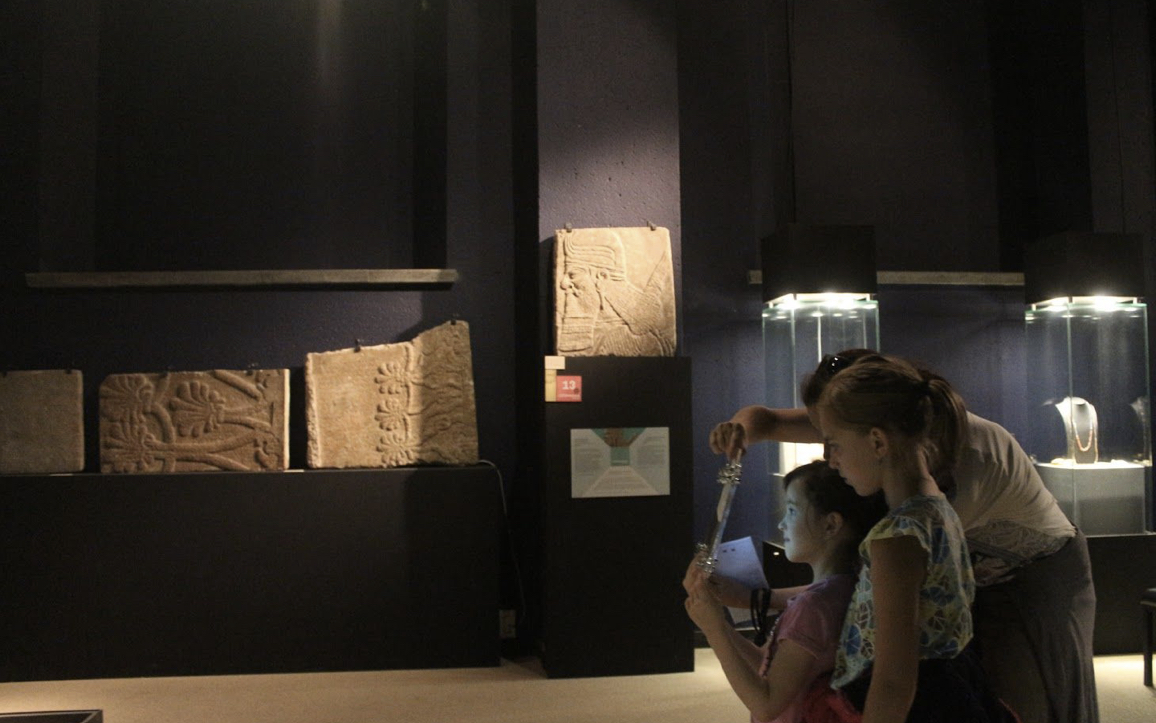An Augmented Reality Interface for Communicating Egyptian Heritage in a Museum
Through a field study in a real-world museum environment, we investigated how an augmented reality (AR) experience impacts the architectural contextualization of an isolated artifact from the Nimrud palace in Iraq. One of the key masterpieces of the Ancient Near Eastern Collections of the Art and History Museum in Brussels, the artefact consists of a very well carved relief depicting the head of a genius crowned with three deifying horns, an elaborate beard and headdress, and some remnants of wings. In the museum exhibition room, the artefact is displayed together with a set of other reliefs and artifacts, all originating from ancient Mesopotamia.
We developed an abstract visualization of the room the artefact was originally located within. First, we designed the room as a semi-transparent in order not to fully isolate visitors from the actual museum environment, avoiding any possible risk to the priceless surrounded artifacts. Second, the salient architectural features, such as the reliefs’ drawings, roof beams and tiles were visualized in a cyan color to stand out. An abstract Assyrian pattern was used to represent the fresco friezes along the walls and the archways which have occasionally been discovered by archaeologists in the palace complex as decoration above the stone orthostates. As little of the original graphics of the frescos from the room is known for certain, the choice was made to stylize a simplified frieze inspired by alike Assyrian art.
Publication
Nofal E., Elhanafi A., Hameeuw H., Vande Moere A. (2018). Architectural Contextualization of Heritage Museum Artifacts Using Augmented Reality. Studies in Digital Heritage (SDH), 2(1), pp. 42-67.
DOI: https://doi.org/10.14434/sdh.v2i1.24500
Nofal, E.; Reffat, R.M.; Vande Moere, A. (2017). Phygital heritage: An approach for heritage communication. In Proceedings of the 3rd Immersive Learning Research Network Conference (iLRN2017), Coimbra, Portugal, 26-29 June 2017, pp. 220-229.
DOI: https://doi.org/10.3217/978-3-85125-530-0-36




